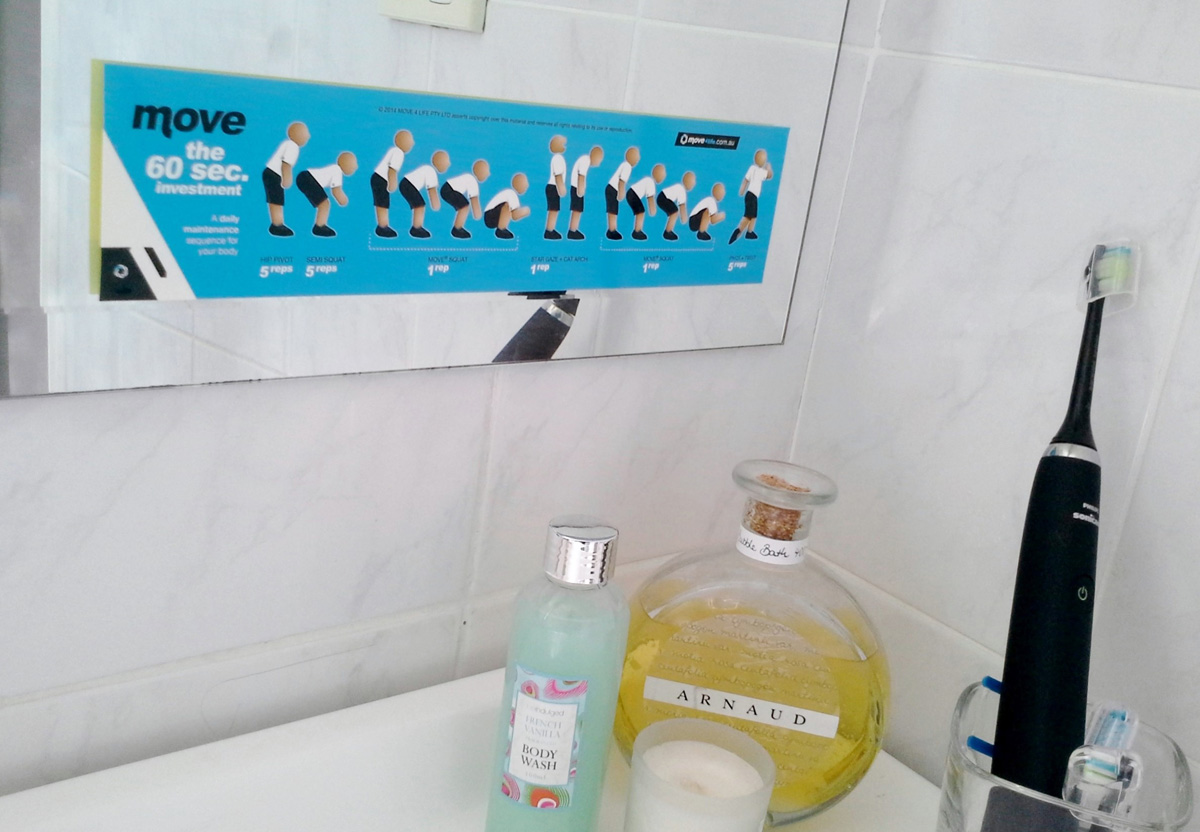Human beings are creatures of habit. Good or bad, we are hardwired to make simple and repeated activities as automatic as possible so that we can devote our upper echelon processing capabilities to more complex tasks.
The task of creating new (ideally value-adding) habits is a focus for many at some point in time (usually on 1 January when a flood of New Year’s resolutions hits).
I have been hovering around the science of habits for some time now. I have read the books, listened to the experts and trialled many techniques. Whilst there are a number of different ways to create or break habits here is ONE that I find really effective.
It’s called Habit Linking.
In short, it’s about linking a habit you are trying to create to a pre-existing one. Almost as if your new habit is riding on the coat tails off a habit that has done the hard work and is well-established.
How does it work?
Step 1: Identify a pre-existing habit you do every day (like brushing your teeth or any other bathroom routine, waiting for the kettle to boil, arriving at work, coffee break … you get the idea).
Step 2: Create a trigger (this could be a visual reminder, an alarm or someone to hold you accountable) to remind you of your new habit.
Step 3: Execute and repeat (lots of times)
In practice, this is how it plays out:
When we are delivering our MOVE Training Program at Move 4 Life, we introduce the “60-second Investment”. It’s a short (60 seconds in fact!) movement routine that is designed to accelerate how quickly people can reprogram how they move. For those who do it daily it is producing great results.
For people who know MOVE Training, understanding the benefits they might get from the 60-second Investment is not an issue, it’s doing it daily that’s the challenge. Good news is … it is demonstrably easier when you use Habit Linking.
We provide a sticker of the 60-second Investment which we encourage to use as a trigger. We typically suggest sticking it on the bathroom mirror so it triggers it whilst you brush your teeth (one of the most well-embedded habits you are likely to have). Simple as that.
Many companies use the 60-second Investment as a pre-start routine. Habit Linking it into start-of-shift team talks or regular management meetings is a popular way of embedding the routine. Some companies are using auditory cues (an alarm or specific piece of music) to trigger people to launch into the routine.

As you go about your day, try these …
When brushing your teeth – do the 60-second Investment (contact us if you want more info), do some stretches, get the kids to do their times-tables or spelling.
When waiting to cross the lights – practice balancing on one foot or squeeze your butt cheeks.
When you are waiting for the kids at any number of their extra-curricular activities – do some exercise, listen to a (value-adding) podcast.
When at the office and waiting for the kettle to boil, the copier to finish or when the phone rings – stand and stretch out the lower back, gluts or hip flexors (the ones that typically get tight from all that sitting).
